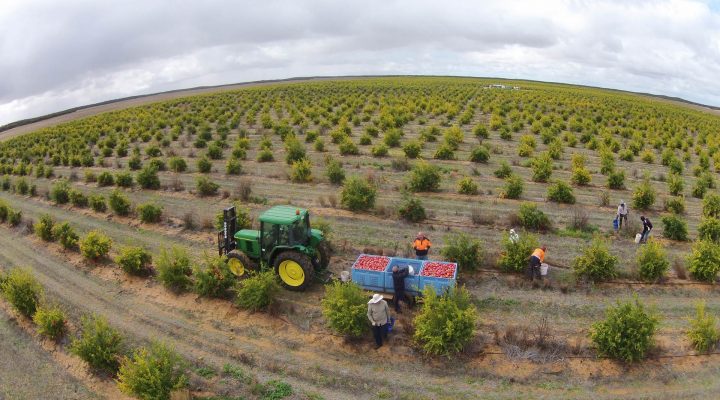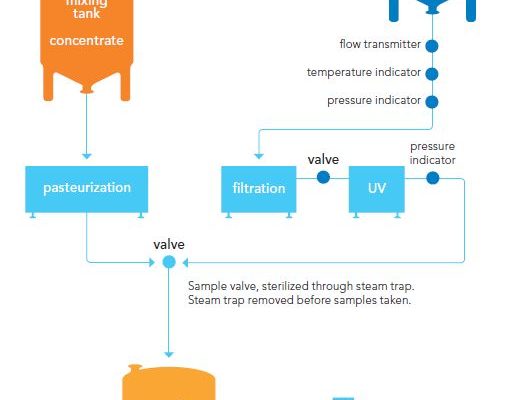Problems down under continue to put pressure on juice industry while leading businesses are urged to innovate to keep pace with changing consumer tastes. One report says that poor prices could mean an end of fresh Australian orange juice in five years, writes FJF.
It’s not just adverse weather that’s affecting Australia – frosts, bushfires, water, the citrus industry is suffering from an onslaught of issues that are making life tough. The domestic citrus crop will be way down in volumes, farming is proving a tough livelihood for growers with rising costs, and to top it consumer demands are changing dramatically which makes juice staples less attractive to younger consumers as they look at alternatives.
Weather issues
Citrus Australia, the industry body representing the nation’s commercial citrus growers, says major retailers must lift prices to juice growers, who are facing a decline in production due to seasonal conditions. CEO Nathan Hancock says prices paid for fresh juice by supermarkets to juice companies does not reflect the seasonal environmental impacts of frost and drought on the 2019/20 Valencia crop.
“This limits the amount of money that juice processors can pay growers, which will exacerbate the long-term decline in juice variety production,” Mr Hancock said.
“The juice growing industry is under immense pressure and Australian consumers may not have access to fresh Australian orange juice in as little as five years.
“The high cost of water and low returns for juicing oranges mean less incentive to irrigate and maintain the crop.” Mr Hancock said growing juice fruit is unprofitable based on current rates, which barely cover the cost to grow the fruit.
Operating environment
Operators in the Fruit Juice Drink Manufacturing industry have faced a difficult trading environment over the past five years, according to analysts IbisWorld.
Strong competition, both internally from private labels and externally from other beverages, has negatively affected industry revenue. In addition, slow growth in household disposable income has caused consumer preferences to shift to cheaper alternatives over the period.
As a result, industry revenue is expected to fall at an annualised 0.4% over the five years through 2018-19, to be worth AUD822.8 million. However, revenue is anticipated to increase by 0.8% in the current year, due to rising health consciousness.
If the domestic market fails it is likely we will see more imported frozen products, or non-refrigerated juice products, rather than fresh imports it has been suggested.
Look to innovation
The Australian Beverages Council is positive about the industry and sees premium products as key to success going forward. Since 2008, chilled juice has been increasing in market value at the expense of ambient juice, growing in value by more than AUD140 million. While the overall value of the juice market has been declining since 2011, forecasts indicate value losses will slow and value should peak this year due to consumers opting for more premium chilled products. Looking further ahead, the expectation is that growth will remain modest across the category with the greatest promise of better margins and sales in premium lines. Clearly this will be contingent upon the local supply of fruit regaining some certainty over the forward horizon, comments the Council.
“It could be noted that Australians on average only consume about half recommended fruit in their diet, so perhaps innovation really is key”
Some of the premium lines introduced by Members of Juice Australia include combinations of fruit and vegetable juices, greater density juices which have been pressed or crushed, and unique juice blends, many of which include coconut water. Some producers have also branched out into other categories, such as non-dairy yoghurt and sparkling juices or flavoured waters.
Just recently, market research on Australian fruit juice suggested millennials and families with young children are key targets for premium juice products. The report found millennials perceive juice consumption as an indulgence, while families with young children generally value high quality ingredients as a key factor in the decision-making process.
It could be noted that Australians on average only consume about half recommended fruit in their diet, so perhaps innovation really is key here as the country is far down the list when it comes to consumption of juice. Their favourite fruit is apparently apple, followed by banana, favourite juice consumed orange, followed by juice blends such as tropical mixes.
Positive vibes despite coronavirus concerns
The Citrus Australia Market Outlook Forum wrapped up in Melbourne recently with the industry looking forward to the season ahead. Citrus Australia Chair Ben Cant says “There is a huge amount of opportunities in export, and there are a lot of trees that are going in,” he said. “There is a lot of confidence in the industry that our record trade figures are going to continue going forward. Another key message is getting to know your consumer/customer and understand the supply chain, through technology, blockchain and genetic testing. There is also a lot of technology and it’s amazing the profound impact technology is having on the industry.”
Another issue on the radar was the Coronavirus, with China a key trading partner with Australia, but Mr Cant says it is a situation the industry will monitor as the season gets closer. “It can certainly go either way,” he said. “That may be due to the reduced economic activity, and consumer behaviour focusing on essential items, and purchasing items like citrus will be reduced. But, that said, the markets are empty of fruit and 1.3 billion Chinese people, a significant portion, who are going to be looking for a Vitamin C hit, to increase immune levels. So, we are confident that there might be a spike in sales this year. Anecdotally, we saw that with trade data, post-SARS in citrus sales. So, we are hoping the Chinese will be back on board and better than ever.”
Australian Beverages Council, IbisWorld, Citrus Australia.







